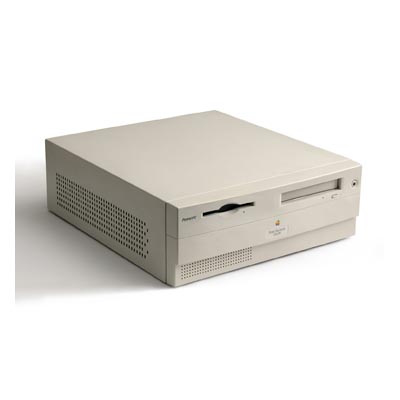IBM PowerPC 603, 603e and 603ev processors
Introduction: April 1995 (603), April 1996 (603e/603ev)
The PowerPC 603 was the first processor implementing the complete 32-bit PowerPC Architecture as specified. It was designed to be a low cost, low end processor for portable and embedded use. One of the main features was power saving functions (doze, nap and sleep mode) that could dramatically reduce power requirements, drawing only 2 mW in sleep mode. The 603 has a four stage pipeline and five execution units: integer unit, floating point unit, branch prediction unit, load/store unit and a system registry unit. It has separate 8KB L1 caches for instructions and a 32/64 bit 60x memory bus, reaching up to 75MHz. The 603 core doesn't support SMP in hardware.
The PowerPC 603 had 1.6 million transistors and was manufactured by IBM and Motorola on a 0.5 µm fabrication process. The die was 85 mm² large drawing 3W at 80MHz. The 603 architecture is the direct ancestor to the PowerPC 750 architecture, marketed by Apple as the PowerPC "G3".
It was used in low end and portable Macintosh models but also found widespread use in different embedded appliances. The processor got a somewhat bad reputation in Apple's computers since the 68k emulation software didn't fit into the relatively small caches causing some degraded performance in older software.
The performance issues of the 603 was addressed in the PowerPC 603e. The L1 cache was enlarged and enhanced to 16KB four-way set-associative data and instruction caches. The clock speed of the processors was doubled too, reaching 200MHz. Shrinking the fabrication process to 0.35 µm allowed for speeds of up to 300MHz. This part is sometimes called PowerPC 603ev. The 603e and 603ev have 2.6 million transistors each and are 98 mm² and 78 mm² large respectively. The 603ev draws a maximum of 6W at 300MHz.
The PowerPC 603e was the first mainstream desktop processor to reach 300MHz. The 603e was also used in accelerator cards from Phase5 for the Amiga line of computers, with CPUs ranging in speeds from 160 to 240MHz. The PowerPC 603e is still sold today by IBM and Freescale, and others like Atmel and Honeywell who makes the radiation hardened variant RHPPC. The PowerPC 603e was also the heart of the BeBox from Be Inc. The BeBox is notable since it is is a multiprocessing system, something the 603 wasn't designed for. IBM also used PowerPC 603e processors in the ThinkPad 800 series laptop computers.
Source: Wikipedia, the free encyclopedia.




